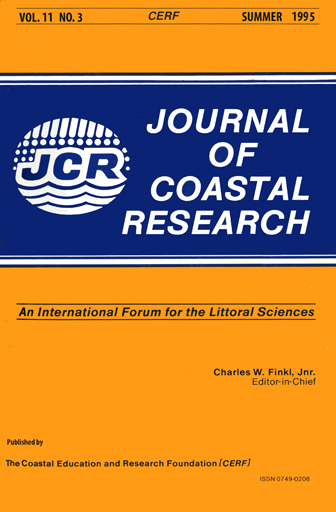Mudbanks of the Southwest Coast of India III: Role of Non-Newtonian Flow Properties in the Generation and Maintenance of Mudbanks
Keywords:
Consolidation, erosion, fluid mud, rheology, viscosity.Abstract
A study of the Alleppey mud bank, one of many which occur annually with the onset of the southwest monsoon season in southern India, indicates that differences in stress-rate of strain relationships exist between the semi-consolidated bottom muds (suggested to be the source of the mudbank material) and dense suspensions (fluid mud) generated from the natural bottom. These differences appear to provide plausible explanations for: (1) generation and accumulation of the mud deposit during the monsoon, (2) preservation of the shorefast mudbank during the high energy event, and (3) disappearance and seaward dissipation of the mud bank after the cessation of the monsoon. These deposits cause seaward accretion of the coastline fronted by the mud bank while erosion occurs in inter-mudbank areas. Post-monsoonal conditions involve change of wave character and direction, the suspended mud settles to the bottom and flows down the shelf gradient to accumulate below wave base and consolidate for approximately nine months, until the next monsoon season.


